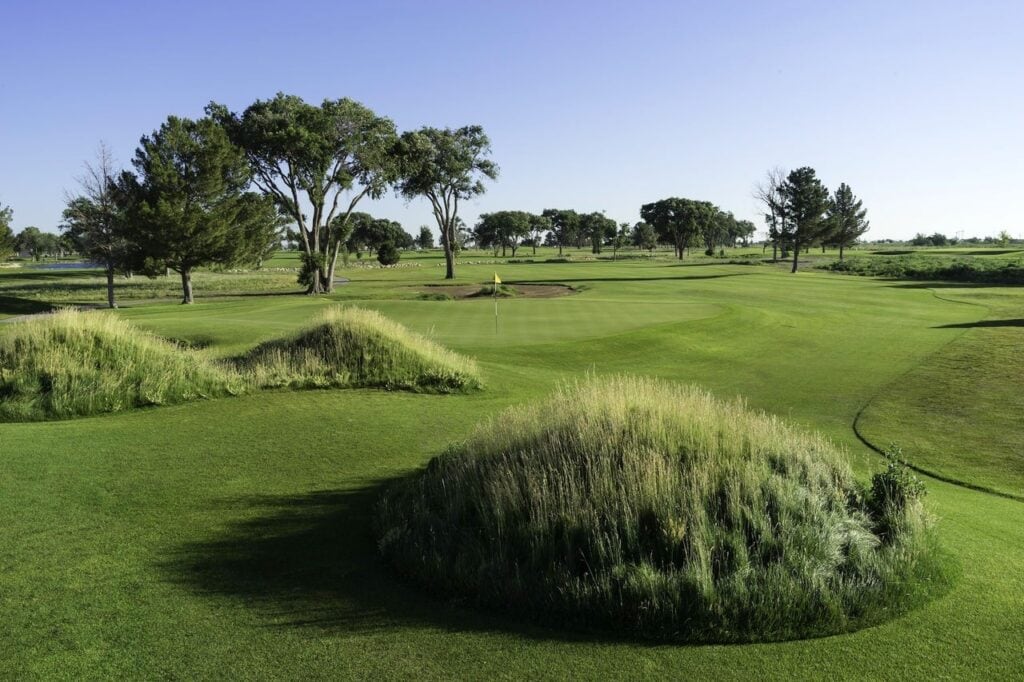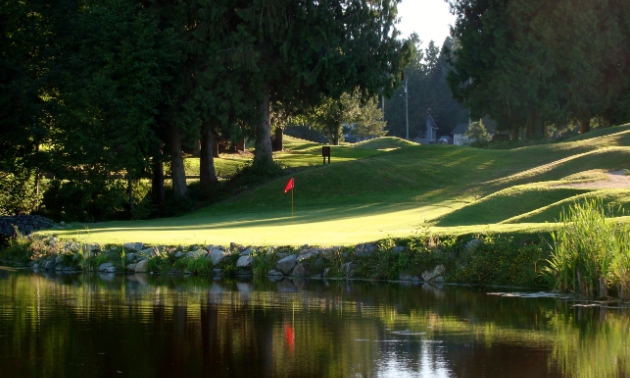Mini Golf
The New Golf Ideas That Are BOOMING in the USA

Mini golf and non-traditional golf concepts is booming in the US and Australia is going to follow
Some other options to complement your mini golf course.....
By this point, you can see how adding a mini golf course can drive huge amounts of revenue to your business.
However, that’s not the only golf idea that could help struggling clubs. Here are some other ideas that are now popular in the huge United States marketplace.

No longer do you need acres of space for the modern golf facility
Idea #1
Modified driving range
A traditional driving range takes up a ton of space. Typically, it’s going to be about 300 metres in length and somewhere between 40 and 60 metres wide. That’s a lot of land and will be prohibitively expensive in the big cities.
But there’s a new type of driving range hitting the market in the next 12 months. This range is much shorter in length, around 75 metres. Plus, the range is completely surrounded by nets, even the roof.
And the golfers, instead of watching the ball sail off into the distance, they watch their ball on a TV screen. This range will utilise the latest in driving range simulator technology where golfers can practise, but also play a round of golf at their favourite course.
Straight away, you can see how this allows one to build a smaller driving range. You free up space for other activities on the course, which means you can create more revenue streams.
However, this clever idea also has other advantages. For example, a smaller driving range allows synthetic grass to be used for the entire surface. Target greens can be added and the synthetic grass ensures an ideal surface all year round.
Further, this new type of driving range will feature automatic ball return for around 90% of the range balls – saving money on wages for ball collection (not to mention the safety factor).
These “smaller” driving ranges really are little cash machines that are incredibly low maintenance, safe (balls cannot exit the playing footprint), profitable and highly entertaining.
Plus, the space that this idea saves means that you could start implementing a few other new ideas, such as those I’m going to share below.
Idea #2
Par 3 Golf Courses
I mentioned earlier that one of the reasons we’re seeing the popularity of full-size courses falling is that they’re intimidating to new players.
A mini golf course offers a great solution for the putting side of things. However, you’re going to have players who want to practice other aspects of the game, such as iron play and chipping. Furthermore, those players may not want to jump straight from mini golf to a full-size course.
That’s where Par 3 courses come in.
The smaller course allows players to develop their skills without the pressure that comes with playing on a full-size course. They also allow for faster rounds of golf, which means you can have more players on the course per day.
Ultimately, that leads to happier players and more rounds of golf sold. Furthermore, these courses can be created from synthetic turf, so ongoing maintenance costs are much lower.
Idea #3
Shorter Courses
An alternative to an 18-hole Par 3 course is to create shorter courses that offer a variety of holes.
For example, you could have a 9-hole course that offers a good mix of par 3, 4, and 5 holes. This offers many of the same benefits as a Par 3 course. You get to attract players who feel intimidated by a full-size course. Plus, players complete their rounds quicker, which means you can sell more rounds per day.
One thing that I didn’t mention with Par 3 courses is that they also save space. The same goes for shorter courses. You could fit a Par 3 course and a 9-hole course into a smaller space that a full-size course would take. This means you’re creating two revenue streams within the same space, as well as benefiting from being able to sell more rounds.
And here’s another thing – with more golf courses looking at maximising revenue, there are many clubs around Australia selling off land for development.
These courses are now looking at reducing the size of their current course. This could be a 7, 9 or 12 hole course.
We believe this could be the future for many clubs. Not all consumers are after the full 18 hole “big course” experience. Shorter and more interesting courses that are constructed to be low maintenance will start popping up all over the place in years to come.

We believe having fewer, but more interesting holes may be the future of golf
Idea #4
Driving Range/Golf Course Simulator Technology
We’re also seeing the rise of golf simulator technology. This works brilliantly if you don’t have space for a driving range or if you want to dedicate that space to something else.
Typically, this technology uses electronic sensors and infrared technology to track ball movement. The player hits the ball into a specially-designed screen, which shows an image of a golf course. When the ball makes an impact, the sensors detect the flight of the ball and simulate it on the screen.
This opens up plenty of opportunities for your club. Your simulator could have multiple courses built into it, which provides plenty of variety for players. Plus, simulators are ideal for those who want a little coaching before moving onto a real course. You could even have an in-house coach, which allows you to charge for lessons.
Furthermore, this is an indoor technology, which means that the weather has no effect on it. Players can complete full rounds without any worries. And best of all, there’s no course maintenance required because everything’s simulated. Even better, this golf simulator technology has moved onto the driving range, where it’s possible to play the world’s best courses from the standard hitting bay.
Idea #5
FootGolf
The concept of footgolf is a simple one. Instead of using clubs and golf balls, players use soccer balls and their own feet to play. The general rules of the game of golf still apply, just with elements of soccer thrown in.
Footgolf opens up another revenue stream for your club. Of course, you’ll have parties that want to engage in something a little different from regular golf. However, you’ll also have the opportunity to market such a course to soccer teams and schools. A foot golf course gives players the opportunity to develop long and short passing skills, which are invaluable in the actual game of soccer.
FootGolf is a new format combining soccer and golf which is proving very popular
Idea #6
Putting Courses
Putting courses are sort of like your traditional practice putting green, but on steroids. They are large greens, either from real life turf or synthetic, that offer the possibility of many playing lines. The golfer isn’t restricted in playing the course in a set way (like you are with a mini golf course).
With a new age putting course, the golfer can be challenged with short putts, but also long putts, over humps and bumps. These courses can be created to complement an existing golf course (the world’s best type of practice putting green) or a fully commercial facility that’s pay for play.
You also need to have a solid marketing plan to attract as many people as possible to your course.
These strategies will help you to get more players, which ultimately leads to higher revenues. Of course, you need to build the course first!
It’s All About Variety
The goal behind each of these ideas is to create variety, which moves you away from the traditional course model. See your club as an entertainment hub, instead of just a place where people can play a round of golf.
Many of these ideas also help you to save space, which means you have more room to dedicate to other forms of entertainment. These may include cafés, bars, playgrounds, or even tennis courts. Again, it’s all about creating multiple revenue streams instead of relying solely on what a traditional course brings in.
We’re working hard to bring many of these ideas to life for golf club owners in Australia.
Get creative! Why not have a putting green like the ladies putting course at St Andrews?
Next we delve into the true costs associated.....
